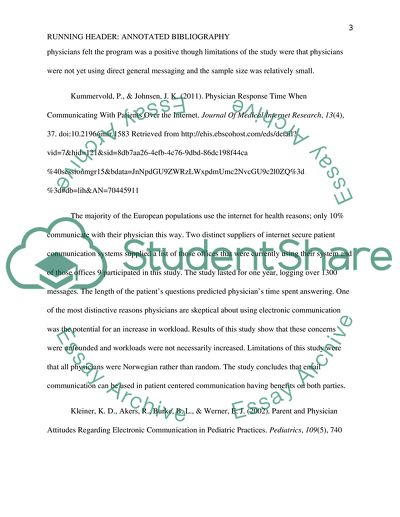Cite this document
(“Physician-Patient Communication Changed by Electronic Mail Exchange Annotated Bibliography”, n.d.)
Physician-Patient Communication Changed by Electronic Mail Exchange Annotated Bibliography. Retrieved from https://studentshare.org/english/1788683-physician-patient-communication-changed-by-electronic-mail-exchange-annotated-bibliography
Physician-Patient Communication Changed by Electronic Mail Exchange Annotated Bibliography. Retrieved from https://studentshare.org/english/1788683-physician-patient-communication-changed-by-electronic-mail-exchange-annotated-bibliography
(Physician-Patient Communication Changed by Electronic Mail Exchange Annotated Bibliography)
Physician-Patient Communication Changed by Electronic Mail Exchange Annotated Bibliography. https://studentshare.org/english/1788683-physician-patient-communication-changed-by-electronic-mail-exchange-annotated-bibliography.
Physician-Patient Communication Changed by Electronic Mail Exchange Annotated Bibliography. https://studentshare.org/english/1788683-physician-patient-communication-changed-by-electronic-mail-exchange-annotated-bibliography.
“Physician-Patient Communication Changed by Electronic Mail Exchange Annotated Bibliography”, n.d. https://studentshare.org/english/1788683-physician-patient-communication-changed-by-electronic-mail-exchange-annotated-bibliography.


